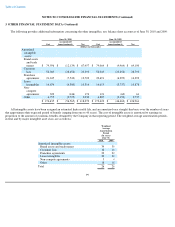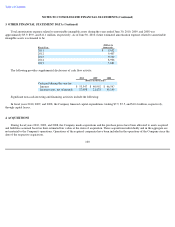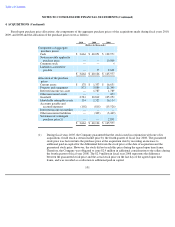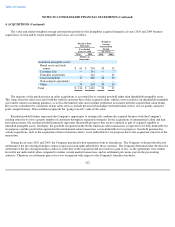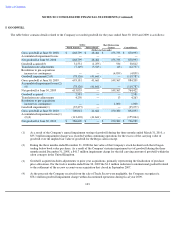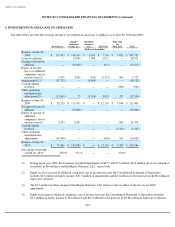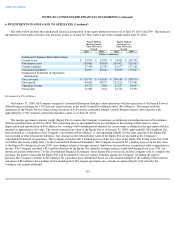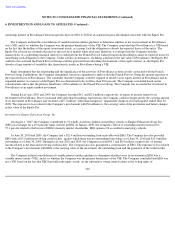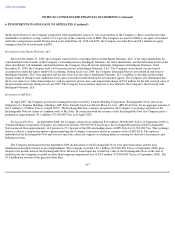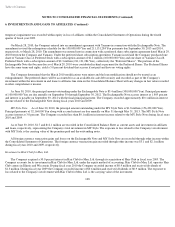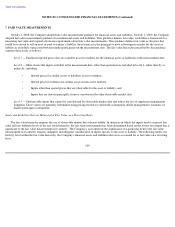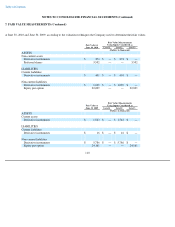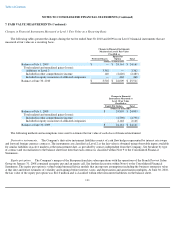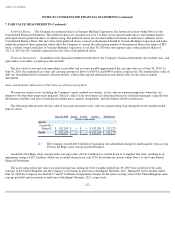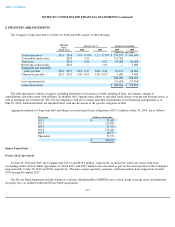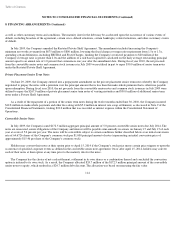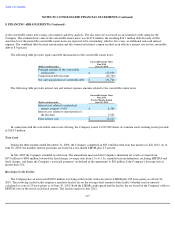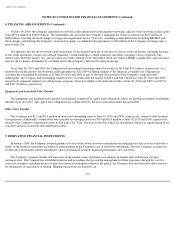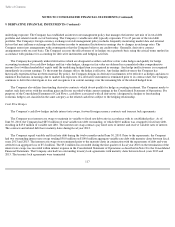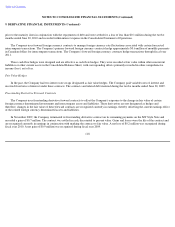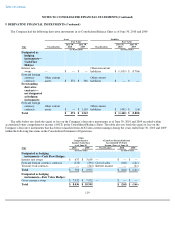Supercuts 2010 Annual Report Download - page 113
Download and view the complete annual report
Please find page 113 of the 2010 Supercuts annual report below. You can navigate through the pages in the report by either clicking on the pages listed below, or by using the keyword search tool below to find specific information within the annual report.
Table of Contents
NOTES TO CONSOLIDATED FINANCIAL STATEMENTS (Continued)
7. FAIR VALUE MEASUREMENTS
On July 1, 2008, the Company adopted fair value measurement guidance for financial assets and liabilities. On July 1, 2009, the Company
adopted fair value measurement guidance for nonfinancial assets and liabilities. This guidance defines fair value, establishes a framework for
measuring fair value and expands disclosure requirements about fair value measurements. This guidance defines fair value as the price that
would be received to sell an asset or paid to transfer a liability (an exit price) in the principal or most advantageous market for the asset or
liability in an orderly transaction between market participants on the measurement date. The fair value hierarchy prescribed by this guidance
contains three levels as follows:
Level 1 —Unadjusted quoted prices that are available in active markets for the identical assets or liabilities at the measurement date.
Level 2 —Other observable inputs available at the measurement date, other than quoted prices included in Level 1, either directly or
indirectly, including:
• Quoted prices for similar assets or liabilities in active markets;
• Quoted prices for identical or similar assets in non-active markets;
• Inputs other than quoted prices that are observable for the asset or liability; and
• Inputs that are derived principally from or corroborated by other observable market data.
Level 3 —Unobservable inputs that cannot be corroborated by observable market data and reflect the use of significant management
judgment. These values are generally determined using pricing models for which the assumptions utilize management's estimates of
market participant assumptions.
Assets and Liabilities that are Measured at Fair Value on a Recurring Basis
The fair value hierarchy requires the use of observable market data when available. In instances in which the inputs used to measure fair
value fall into different levels of the fair value hierarchy, the fair value measurement has been determined based on the lowest level input that is
significant to the fair value measurement in its entirety. The Company's assessment of the significance of a particular item to the fair value
measurement in its entirety requires judgment, including the consideration of inputs specific to the asset or liability. The following tables sets
forth by level within the fair value hierarchy, the Company's financial assets and liabilities that were accounted for at fair value on a recurring
basis
109


